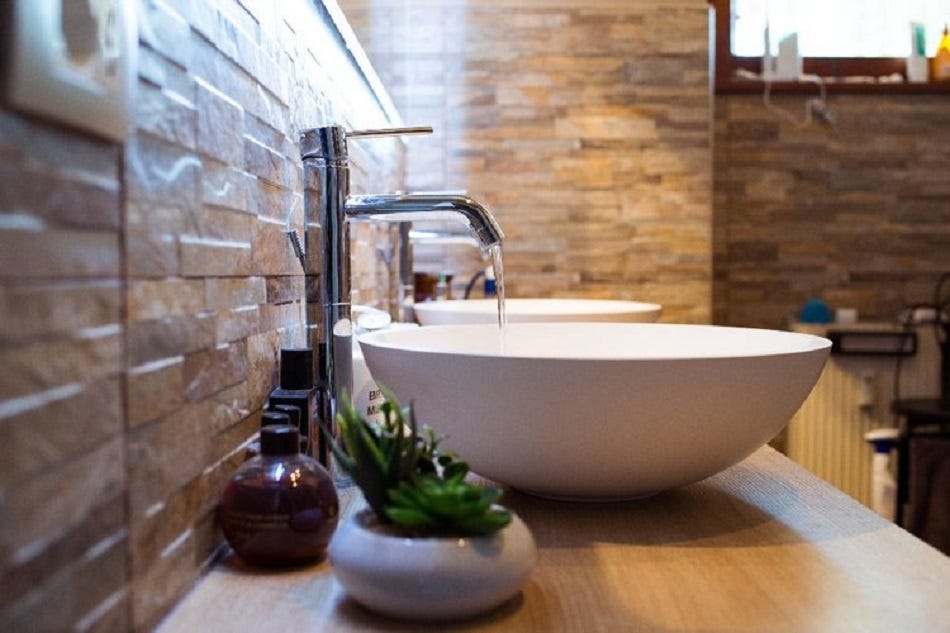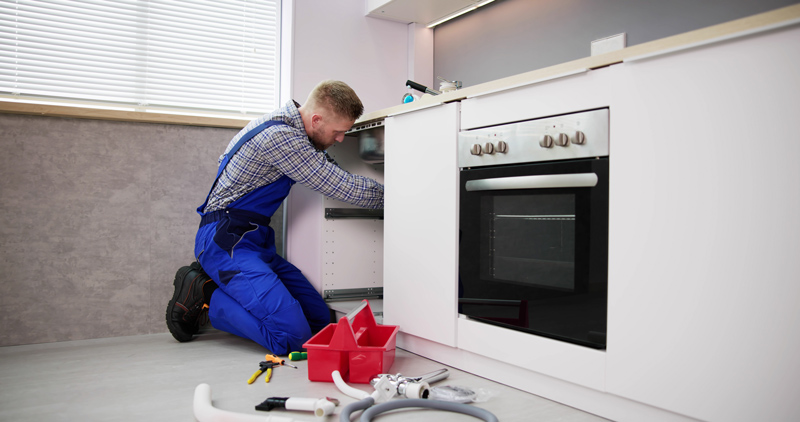We have stumbled on this post about 11 Must-Read Tips for Plumbing a New House down the page on the internet and felt it made sense to relate it with you here.

For brand-new home owners, understanding and maintaining washroom plumbing can save both money and time by protecting against expensive problems down the line. Below are some essential restroom plumbing pointers to help you maintain every little thing running efficiently.
Acquaint Yourself with the Key Shut-Off Shutoff
Recognizing where the major water shut-off shutoff is located in your home is vital. This permits you to swiftly switch off the water in case of significant leakages or throughout pipes emergency situations, stopping substantial water damages.
Consistently Evaluate for Leaks
Small leaks can result in big problems. Routinely check under sinks, around bathrooms, and near plumbing fixtures for any signs of leakages. Seek moisture, tiny drips, or corrosion. Catching and repairing leaks early can prevent more serious damage and save water.
Don't Disregard Slow Drains
If your sink or bath tub is draining pipes gradually, it's typically a sign of an obstruction creating. Addressing this early can protect against a full obstruction. Make use of a bettor or a plumbing professional's serpent to clear out particles. Stay clear of utilizing chemical drainpipe cleaners as they can damage your pipelines with time.
Know What Not to Flush
Commodes are not garbage disposals. Avoid flushing anything besides toilet tissue and human waste. Things like wipes, feminine health items, and cotton swabs should be disposed of in the trash to prevent blockages and sewer backups.
Set Up Strainers in Drains
Place strainers in your sink and bath tub drains pipes to catch hair and various other particles before they enter your pipes system. Cleaning up the filters on a regular basis will help protect against accumulation and keep water flowing openly.
Preserve Your Hot Water Heater
Guarantee your water heater is readied to an ideal temperature level (usually around 120 levels Fahrenheit) to avoid hot and lower energy usage. Flush the storage tank each year to remove sediment accumulation, which can decrease the effectiveness and life expectancy of your heater.
Upgrade Your Components
If your home has older components, think about updating to much more reliable versions. Modern commodes, showerheads, and faucets are created to make use of less water while offering excellent stress, which can significantly decrease your water expense and ecological impact.
Beware with Do It Yourself Plumbing Repair Works
While it's appealing to manage all home fixings by yourself, beware with pipes. Some concerns might need expert experience, specifically if they entail major water lines or sewer repairs. Employing an expert can often be a lot more economical than do it yourself, particularly if it stops more damages.
Plan For Winter
Shield your pipelines from cold throughout cold weather by insulating pipelines in unheated areas like cellars, attics, and garages. During extreme cool, let cold water drip from taps offered by subjected pipes to help prevent cold.
Set Up Normal Upkeep
Think about scheduling annual inspections with a licensed plumber. They can detect concerns that you could miss, such as covert leaks or damage on pipes and fixtures. Normal upkeep assists extend the life of your pipes system and can stop emergencies.
Conclusion
Recognizing and keeping your home's shower room plumbing can protect against lots of common concerns. By complying with these important suggestions, you can guarantee your shower room remains useful and effective, conserving you money and time in the long run.
8 Valuable Plumbing Tips for New Homeowners
Start With a Plumbing Inspection
It’s a good idea to call professionals to do the plumbing inspection. An inspection before moving in will help you realize any underlying plumbing problems so they don’t cause any inconveniences.
Inspections will help you realize any problems early enough and fix them before they cost you much more later. It’s even better if you do it before moving in.
Call professional inspectors who use high-tech equipment and cameras to survey the sewer systems and find hidden water pipes. They then check the conditions of the pipes and recommend solutions in case of problems. Even after moving in, carry out regular inspections to ensure everything is working optimally.
Understand the Signs of a Water Leak
Water leaks will damage your home if you don’t realize them early. If you’ve never owned a home before, you may have no idea about water leaks. Signs of leaking water include dripping sounds, signs of running water on the walls, or soft wallboards.
Inspect your cabinets to check for any signs of moisture and leaks. Also, record your monthly water bills. If you’re receiving high bills than normal, maybe the pipes are leaking water.
Clean the Drains to Prevent Clogging
Many things can block your drains. Soap, debris, oil, and hair are those dangerous things you don’t want to allow down the drains. If you don’t take care of them as soon as you move in, they’ll clog your drains and cause problems.
But sometimes you enter the house and notice that the drains are already clogged? You need to start the unclogging work by pushing down the debris using a plunger. Homemade solutions such as a combination of dish liquid and vinegar can also do the job.
Regularly clean your drains and prevent any dirt from piling up. No one wants to deal with clogged drains, and prevention is always better than cure.
Locate Your Water Valve
You need to know where to close if there’s a water leak or a burst pipe in your home. The main valve is located in a green utility box outside the house. In some houses, the valve is mounted underground.
Some valves are located inside the house in case there’s a utility room or in the basement. You’ll find the shutoff valves behind the plumbing fixture in the areas they serve. This can be behind the toilet, in the laundry area near the washing machine, or behind the toilet.
Put Weather Proofing the Pipes Among the Plumbing Tips
Weather can be the biggest enemy of your pipes. The colder seasons are the most dangerous because they can freeze the pipes. Frozen pipes can burst at any time, causing serious flooding and water damage in your home.
Avoid frozen pipes by clearing the lines and turning off the valves before the winter season. Insulate the exposed pipes using heating tape, fiberglass, or foam rubber sleeves. Open the cabinet doors to allow warm air circulation and put the faucets in a slow drip.
Learn Some Maintenance Tips for Your Faucet and Toilet
The toilet’s flapper and faucet cartridge will get old with time, and you’ll need to replace them. You don’t need to call a professional to repair your faucet and toilet whenever they have problems. Buying the new ones only cost a few bucks and comes with clear instructions for DIY faucet installation.
Don’t be afraid to try changing the cartridge or the flapper when you experience a leakage problem. It only takes a matter of minutes to remove a few screws, and you’ll be ready to go. You don’t need to spend all that money to hire someone when help is in your hands.
Have Your Emergency Items Ready
You need to have your plumbing kit within your reach always. Whenever you experience an emergency such as a water leak, you should grab your tools and get ready to fix the problem. Some of the essential tools for the work include a plunger, paper rolls, duct tape, a screwdriver, and towel rags.
Don’t forget to have hex keys ready so you can adjust the small bolts and fix multiple plumbing issues right away. You should also know that you won’t be able to fix all the plumbing issues all by yourself as some are too complicated. Ensure you have a contact list of certified and licensed plumbers near you.
Make Use of Simple Home Items
Many plumbing problems have their solutions right at home, and you don’t have to spend a dime. Some of the resources you have at home, such as a dishwasher, a bucket of water, or the drain snakes, can do the work.
A full bucket of water down the toilet bowl can help fix a toilet bowl issue. Pouring the water at high speed down the toilet drain will unclog everything and unblock the toilet. A plunger and a drain snake are also helpful for unclogging drains, tubs, sinks, and toilets.
Learn the Right Plumbing Tips and Take Care of Your Home
It’s always good to try and save some bucks whenever possible. These simple plumbing tips will help new homeowners settle smoothly and avoid petty issues. Well, there are some plumbing issues you can’t fix yourself, and you need a reputable plumber to help.
If you decide to seek professional services, there will be no better place to go than Mr. Rooter Plumbing. Get in touch with us, and let’s give you a plumbing estimate in Austin. We’re always here to ensure you get the best plumbing services for your home.
https://www.mrrooter.com/austin/about-us/blog/2021/may/8-valuable-plumbing-tips-for-new-homeowners/

Call Today
Comments on “Understanding Bathroom Plumbing: Essential Tips for New Homeowners”